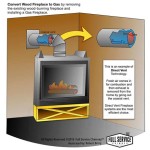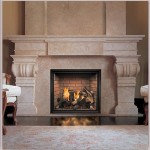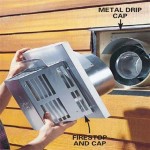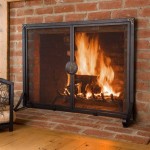Stones Used In Fireplace Construction: A Comprehensive Guide
The fireplace, a timeless focal point in homes, offers warmth, comfort, and aesthetic appeal. The selection of stones used in its construction significantly impacts its durability, aesthetics, and functionality. Understanding the properties of different stones and their suitability for fireplace applications is crucial for creating a safe and visually pleasing feature.
This article explores various types of stones commonly employed in fireplace construction, detailing their characteristics, advantages, disadvantages, and ideal applications. The information presented aims to provide a comprehensive understanding of the materials available, assisting in informed decision-making for fireplace design and installation. Factors such as heat resistance, porosity, aesthetic compatibility, and cost are considered for each stone discussed.
Understanding the Key Properties of Fireplace Stones
Several properties are critical when selecting stones for fireplace construction. These properties directly impact the stone's performance and longevity under the extreme conditions associated with fire. The following are some of the most important characteristics to consider:
Heat Resistance: This is paramount, as stones must withstand high temperatures without cracking, crumbling, or undergoing significant expansion or contraction. Stones with low heat resistance are prone to degradation, posing safety hazards and compromising the fireplace's structural integrity.
Porosity: The amount of air space within a stone. Highly porous stones absorb moisture more readily, which can cause cracking and spalling when subjected to heat. Lower porosity is generally preferred for fireplace applications, particularly in climates with freeze-thaw cycles.
Density: Density is directly related to heat retention and resistance to damage. Denser stones tend to absorb and radiate heat more effectively, contributing to the fireplace's overall efficiency and providing more sustained warmth. Denser stones are also typically more resistant to impact and abrasion.
Appearance: Aesthetic considerations play a crucial role. The stone's color, texture, and pattern should complement the overall design of the room and reflect the homeowner's personal style. Availability and cost are also important factors, influencing the final material selection.
Durability: Fireplace stones must be able to withstand years of use and cleaning. The stone should also be resistant to staining and erosion from smoke and soot. Some stones require more maintenance than others to maintain their appearance and structural integrity.
Common Stone Types Used in Fireplace Construction
Numerous stone types are suitable for fireplace projects, each offering unique characteristics and aesthetic qualities. These include manufactured and natural options, and the choice depends on the desired look, budget, and performance requirements. Here are some of the most popular choices:
Granite: An igneous rock known for its exceptional durability and heat resistance. Granite is incredibly dense and non-porous, making it an excellent choice for fireplace surrounds, hearths, and mantels. It's available in a wide range of colors and patterns, offering versatility in design. However, granite can be more expensive than some other stone options, and its density can make it challenging to work with without specialized tools. Its non-porous nature makes it easy to clean and maintain.
Marble: A metamorphic rock prized for its elegant appearance and smooth texture. Marble is a classic choice for fireplace surrounds and mantels, adding a touch of luxury to any space. However, marble is relatively porous and susceptible to staining, so it requires sealing and careful maintenance. It is also more susceptible to heat damage compared to granite, and using it directly inside the firebox is typically not recommended. It works best as a decorative surround or mantel.
Limestone: A sedimentary rock known for its warm, earthy tones and natural texture. Limestone is a versatile material that can be used for various fireplace applications, including surrounds, hearths, and fireboxes (when specifically rated for such use). It is more porous than granite but less expensive. Sealing is important to prevent staining. Limestone offers a rustic and inviting aesthetic, blending well with various architectural styles.
Soapstone: A metamorphic rock known for its exceptional heat retention and soft, smooth texture. Soapstone is an excellent choice for fireplace fireboxes and hearths due to its ability to absorb and radiate heat efficiently. It is naturally non-porous and resistant to staining, making it easy to maintain. Soapstone is typically darker in color and offers a distinctive, understated elegance. It's a popular choice for wood-burning stoves and fireplaces where heat efficiency is a priority. It is more easily scratched than granite or marble.
Slate: A fine-grained metamorphic rock known for its durability and distinctive layered appearance. Slate is often used for fireplace surrounds and hearths, adding a touch of natural beauty and texture to the space. It is relatively non-porous and resistant to heat, making it a practical choice for fireplace applications. Slate is available in a range of colors, from dark grays and blacks to greens and purples, offering a variety of design options.
Fieldstone: Naturally occurring, uncut stones gathered from fields or riverbeds. Fieldstone offers a rustic and organic look, creating a unique and authentic fireplace. The color and texture of fieldstone vary widely depending on the local geology. Fieldstone is often used for constructing entire fireplaces, adding a distinct character to the room. It requires careful selection and placement to ensure structural stability and safety. It can be challenging to work with due to its irregular shapes and sizes.
River Rock: Smooth, rounded stones typically found in riverbeds. River rock provides a natural and textured look, adding a unique element to fireplace designs. It's often used as an accent material for fireplace surrounds or as decorative fill for fireboxes. River rock is relatively inexpensive and easy to obtain, but it may require cleaning and sealing to prevent discoloration and staining.
Manufactured Stone Veneer: A lightweight, cost-effective alternative to natural stone. Manufactured stone veneer is made from concrete or other composite materials and is designed to mimic the look and feel of natural stone. It is easier to install and less expensive than natural stone, making it a popular choice for budget-conscious homeowners. Manufactured stone veneer is available in a wide range of colors, textures, and styles, offering versatility in design. However, it may not possess the same durability and longevity as natural stone.
Considerations for Installation and Maintenance
Proper installation is crucial for the safety and longevity of any fireplace stone. A qualified mason or contractor should be consulted to ensure that the stone is installed correctly and meets all local building codes. Mortar selection is also important, as it must be heat-resistant and compatible with the chosen stone type. In addition to professional installation, periodic maintenance can prevent cracking and staining of the stone. The following points should be considered:
Mortar Selection: Fire-resistant mortar is essential for joining stones in the firebox. This mortar is formulated to withstand high temperatures and prevent cracking. The type of mortar should be compatible with the specific stone being used.
Sealing: Porous stones such as limestone and marble require sealing to prevent staining and water damage. A high-quality stone sealer should be applied according to the manufacturer's instructions. Regular re-sealing may be necessary depending on the stone and its exposure to moisture.
Cleaning: Regular cleaning can help prevent the buildup of soot and ash on the stone surface. A soft brush and mild detergent can be used to clean most stone types. Avoid using harsh chemicals or abrasive cleaners, as these can damage the stone. A specialized stone cleaner may be required for more stubborn stains.
Inspection and Repair: Periodic inspection of the fireplace is recommended to identify any cracks or damage. Small cracks can be repaired with patching compounds designed for stone. Larger cracks or significant damage should be addressed by a qualified mason to prevent structural problems.
Ventilation and Airflow: Proper ventilation is essential for the safe and efficient operation of a fireplace. Ensure that the chimney is clear of obstructions and that the damper is functioning properly. Adequate airflow is needed to fuel the fire and prevent the buildup of carbon monoxide.
Choosing the right stone for your fireplace involves careful consideration of several factors. Understanding the properties of different stone types, as well as proper installation and maintenance practices, will ensure that your fireplace is not only beautiful but also safe and functional for years to come.

Why Natural Stone Is The Best Choice For Your Fireplace

What Types Of Stones Are Used In Fireplace Mantels Tor Chimney

Dk Studio

5 Ways To Use Natural Stone For A Show Stopping Fireplace

Why Your Home Could Use A Stone Fireplace

Choose Natural Stones For Your Fireplace Surround Baasar

Thin Stone Veneers Make A Fireplace Update Easy Swenson Granite 100 Natural Stones

Natural Stacked Stone Veneer Fireplace Ideas

How To Pick The Best Stone For Fireplaces Stoneworx

Some Stone Fireplace Surround Ideas You Ll Love Southwest Supply








